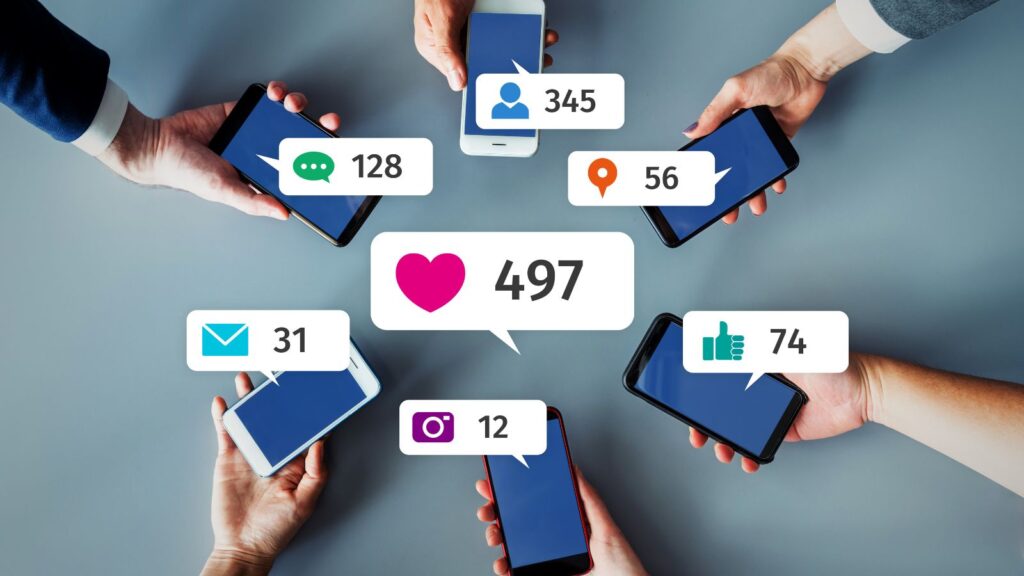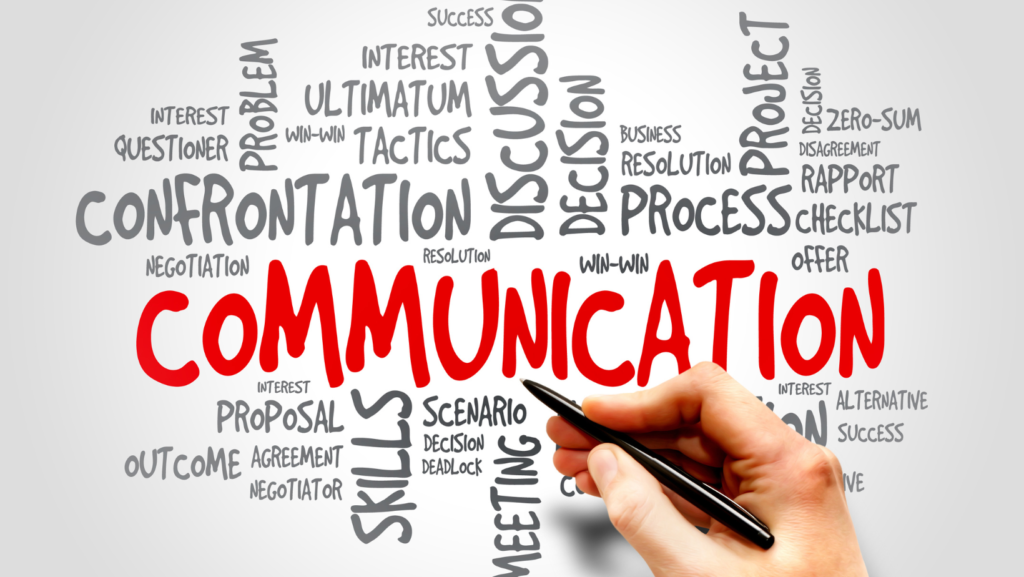Influencer marketing is all the rage these days, and it’s not hard to see why. With the power of social media, a single influencer can reach a massive audience and generate hype around a brand’s product or service. But, as with any marketing strategy, there are some common mistakes that brands make when working with influencers.
If you’re thinking about working with an influencer, it’s important to know what to look out for to avoid blunders that can waste your money and lead to a bad experience for everyone involved. So, let’s dive into some of the most common mistakes brands make when working with influencers and how to avoid them.
1. Choosing Influencers Only Based on Audience Size
With influencer marketing, a lot of brands think that bigger is always better. They think that working with influencers who have millions of followers is the best way to go. But that’s not always the case.
You need to look beyond just audience size to engagement rate. A smaller influencer might have a more engaged audience, which could mean more sales for your brand. Plus, smaller influencers are usually cheaper to work with, which is great if you’re on a tight budget.
Micro- and nano-influencers are likely to have a more focused following and audience compared to macro-influencers, which means you’ll get in front of a higher percentage of your target market.

Another thing to think about is authenticity. Some influencers will promote anything to grow their following, even if it doesn’t really fit with their brand or values. But if their followers sense that they’re fake, they won’t trust them anymore. So, it’s better to work with influencers who are genuine and only promote things they truly believe in.
You also want to make sure that the influencer’s audience is relevant to your brand. If you’re trying to reach a specific group of people, partnering with a famous influencer who has a broad audience might not be the best idea. Look for influencers who have followers that are relevant to your brand.
So, don’t get too caught up in follower count. By considering things like engagement, authenticity, and relevance, you can find influencers who are a better fit for your brand and more likely to help you achieve your goals.
2. Expecting Results too Quickly
Sometimes brands expect too much when they work with influencers. They think that if they just find the right influencer, they’ll see a sudden increase in sales or tons of new followers. But that’s not how it always works.
Some brands can see an immediate boost in sales or engagement as a result of their influencer partnership, but for most brands influencer marketing takes time to have a real impact on revenue and engagement.
By focusing solely on short-term results, brands may miss out on the opportunity to build a more meaningful connection with their target audience and build brand loyalty over time.

When it comes to influencer marketing, brands should definitely have a long-term plan in mind. It’s not just about getting quick results and moving on to the next campaign. Instead, brands should focus on building a strong relationship with influencers over time. This can involve regular engagement with the influencer’s audience, leveraging their influence to build brand awareness and credibility in the long run, and setting clear goals and objectives that extend beyond immediate results.
By taking a more strategic approach to influencer marketing, brands can create impactful campaigns that have a lasting impact on their audience and build strong, lasting relationships with influencers.
3. Not Giving Influencers Enough Time to Use the Product
Getting into the influencer marketing game can be an exciting time for any brand. And especially after hiring the first and getting product in their hands, most brands are excited to get that first piece of content. But not providing enough time for influencers to use, experience, or install a product can end up being disastrous for any campaign.
If a product requires a lot of effort, has a steep learning curve, or needs to be installed, influencers need time to figure it out before they can genuinely recommend it to their audience. Otherwise, their promotion may come across as fake or forced, which can negatively impact the brand’s reputation and credibility. This is why it is crucial for brands to be realistic about their expectations and give influencers enough time to use and experience their products before promoting them.

By providing influencers with ample time to test and use the products, brands can ensure that their promotion is real and authentic. This helps to build trust and credibility with the influencer’s followers, which is important to the success of any marketing campaign. When influencers have enough time to use a product, they can create more engaging and detailed content, which can help grow the brand’s exposure and reach.
When it comes to influencer marketing, it is important for brands to be mindful of the fact that influencers need time to use, experience, and install their products before promoting them. Brands should set realistic expectations and provide influencers with enough time to test and use their products, which will help ensure that the influencer’s promotion is genuine and trustworthy.
4. Being too Controlling
When brands team up with influencers, they need to find the right balance between being in control and giving the influencer some creative freedom. Brands want to make sure their message is on point, but being too controlling can mess things up.
A major problem with being too controlling is that it can make influencers seem fake. Influencers need to be real and relatable to their followers. If they feel like they’re being forced to promote something in a way that doesn’t feel genuine to them, their followers will see right through it. That’s why it’s important for brands to strike a balance between giving guidance and letting the influencer have some creative freedom. It allows the influencer to use their own voice and style to promote the product in a way that feels natural to them. This not only leads to better engagement and results for the brand, but it also helps to maintain the influencer’s authenticity and credibility with their followers.

When a brand is too controlling it can limit the partnership’s potential. Brands that try to micromanage everything an influencer does are missing out on their unique perspective and creativity. Influencers are experts in their field. They know their audience, they know how to create engaging content, and they know what works best for their followers. When a brand tries to micromanage everything an influencer does, they’re essentially missing out on all of that valuable expertise. By letting the influencer do what they do best, brands can reach their audience in new and exciting ways.
If a brand tries to control everything an influencer does, it can really put a damper on the influencer’s creativity and unique perspective. Influencers are known for their creativity and ability to connect with their followers, so it’s important to let them do their thing. They know what works for their audience, and trying to force them into a rigid mold can make their content feel fake or forced. When influencers feel respected and valued, they’re more likely to be committed to creating high-quality content that aligns with the brand’s vision.
5. Not Working With Enough Influencers
In today’s digital age, influencer marketing has become an increasingly popular strategy for brands looking to reach and engage with consumers. However, when brands limit themselves to working with only a few influencers, they run the risk of restricting the reach and impact of their campaign.
When a brand works with only a few influencers, they might not be able to tap into new audiences or connect with a diverse range of people. As a result, their campaign might not get the exposure and engagement rates they were hoping for. By sticking to a small pool of influencers, brands run the risk of overlooking potential customers who could be interested in their products or services but have yet to be reached. It’s like only talking to the same group of friends at a party and not meeting new people who could turn out to be great acquaintances.

Working with only a few influencers might seem like a good idea to test out the waters of influencer marketing, but this usually isn’t the best approach. This could end up limiting the campaign growth and stop the brand from tapping into new audiences. By working with more influencers from the start, brands can have collaborations that breathe new life into their campaigns, reach a wider range of people, and mix up their content with fresh perspectives.
6. Not Communicating Enough
When it comes to influencer marketing, communication is the name of the game. If the brand and influencer aren’t on the same page, it can spell disaster for the campaign. The success of a partnership depends on how well the two parties communicate with each other. If the brand drops the ball and doesn’t clearly communicate their needs and expectations to the influencer, it can cause all sorts of issues.
Staying in touch with influencers throughout the campaign process is crucial for the success of any campaign.

We have lots of communication with an influencer during the selection process, and once we decide to move forward we then share updates on products, shipping and content guidelines. Staying in touch at every stage of the campaign is important to ensure smooth delivery of assets and posting.
When brands don’t communicate clearly with influencers, it can lead to delays in the campaign, missed deadlines, and increased costs. Not to mention products not shipping to influencers on time and tracking info not being sent. Plus, the influencer might have to revise their content multiple times, which leads to even more delays and costs for the brand.
7. Not Giving Creative Guidelines
If a brand wants to work with influencers, they should give them guidelines to follow. This helps make sure that the influencer’s content matches the brand’s values and messaging. The brand should start by explaining what they’re all about and what they want to say. They can do this by creating a detailed brief that talks about the goals of the campaign, who they’re trying to reach, and what they want the influencer to talk about. The brief should also include a list of things that the influencer should and shouldn’t do, so they don’t mess up by mistake.
If an influencer does not understand the brand’s values or objectives, it can result in content that doesn’t align with the brand’s messaging. The influencer may struggle to come up with content ideas on their own, leading to delays in the campaign or content that doesn’t meet the brand’s standards.

To get the most out of your influencer partnership, it’s crucial to give detailed information on what you’re looking for in terms of content. This includes things like the vibe, lighting, and general inspiration you want to convey. By giving influencers a clear idea of what you want, they can better understand your brand’s vision and create content that aligns with it. The more information you provide, the easier it is for them to deliver the type of content you’re after.
This would also include providing a clear set of goals for what the brand is looking for with the content. Without these goals, the influencer might produce content that doesn’t help the brand or connect with the right people. Take for example a makeup brand that partners with a beauty influencer to promote their new line of vegan lipsticks. If the brand forgets to tell the influencer that the lipsticks are vegan, the content might flop and not hit the right audience. That’s why brands need to be crystal clear about their expectations and give influencers all the details they need about the campaign. This will help them create content that’s on-point and speaks directly to their audience.
All of this leads to the brand and influencer being on the same page in terms of what to expect and what is required of them. When everyone’s on the same page about what they’re trying to achieve, brands and influencers can work together to produce content that really speaks to their target audience and gets real results for the brand.
8. Not Offering Fair Payment
When a brand doesn’t pay influencers enough, it can really take the wind out of their sails. As you know, influencers have worked hard to build up their followers and create content that resonates with them. So, when a brand doesn’t offer fair compensation, it can make the influencer feel like they’re not valued or appreciated. This lack of recognition can really kill their motivation and enthusiasm towards the brand’s campaign.
Another issue is that influencers rely on sponsorships to make a living, so if they feel like they’re not being paid enough, they’re going to prioritize other opportunities that offer better compensation. This can result in the influencer putting less effort into the campaign, leading to lower quality content and less engagement from their audience.

But it’s not just about the money – inadequate compensation can also erode trust between the influencer and the brand. Influencers may feel like the brand isn’t valuing their contribution to the campaign, which can lead to a breakdown in the influencer-brand relationship. This can make the influencer less likely to work with the brand again in the future, and even lead them to share negative feedback about their experience with their followers.
Brands often offer influencers gifted products as all or partial payment for a campaign. Just as with financial payment, not offering enough gifted products can also lead to a lack of motivation and enthusiasm. Influencers rely on receiving products from brands to create engaging content for their followers. Without enough products, the influencer may not have the necessary materials to create the content that the brand is looking for, which can lead to a lack of motivation and enthusiasm from the influencer.
It’s really important for brands to recognize the value that influencers bring to their campaigns and to compensate them fairly for their work. By prioritizing fair compensation, brands can build stronger relationships with influencers, resulting in more successful campaigns and increased brand awareness.
9. Not Seeing Warning Signs
Influencers are people, and just like any relationships, things can go bad if red flags are ignored. Here’s a few to watch out for.
If an influencer takes a long time to reply to your messages or emails, it could be a sign that they’re not very organized or invested in the partnership. Communication is super important, so brands need to be able to count on their influencers to be responsive and timely. If influencers are very slow to respond at the beginning of an engagement, don’t be surprised if they’re slow to fulfill their part of your agreement.
When working with influencers, be careful with those who ask for more money after you’ve already agreed on a payment. Yes, things can change and rates may vary as influencers get more accounts to work with, but if someone has agreed to a specific engagement level then they should fulfill their part of the agreement. If an influencer asks for more money mid-engagement that’s a clear sign to move on, or get some additional content or social sharing in exchange for the additional fees.

Ignoring the campaign brief is another red flag to watch out for. If influencers don’t create content that reflects your brand’s values or goals, it can hurt your reputation. So, it’s crucial to make sure the influencer understands the campaign objectives and is dedicated to making content that fits with them. You should be explicit about your messaging, visual identity, and tone of voice guidelines, and if influencers ignore that then it’s important to reign them in have them re-shoot content so it’s in line with your brand.
Collaborating with influencers can be an awesome strategy to promote your brand. However, it’s crucial to watch out for some warning signs to prevent any adverse effects on your brand’s image. By picking the right influencers, being honest about your intentions, and communicating clearly, you can establish a fruitful partnership and accomplish your marketing objectives.
Set Up Your Campaign for Success by Avoiding These Influencer Campaign Blunders
Working with influencers can be a fantastic way to promote your brand and get it in front of new audiences. While there are mistakes many brands make, by avoiding these blunders your influencer campaign should be set up to deliver successful results.
Want help taking your e-commerce store to the next level? Click here to learn more about Brandhopper Digital and see if your business is a good fit to work with us!
